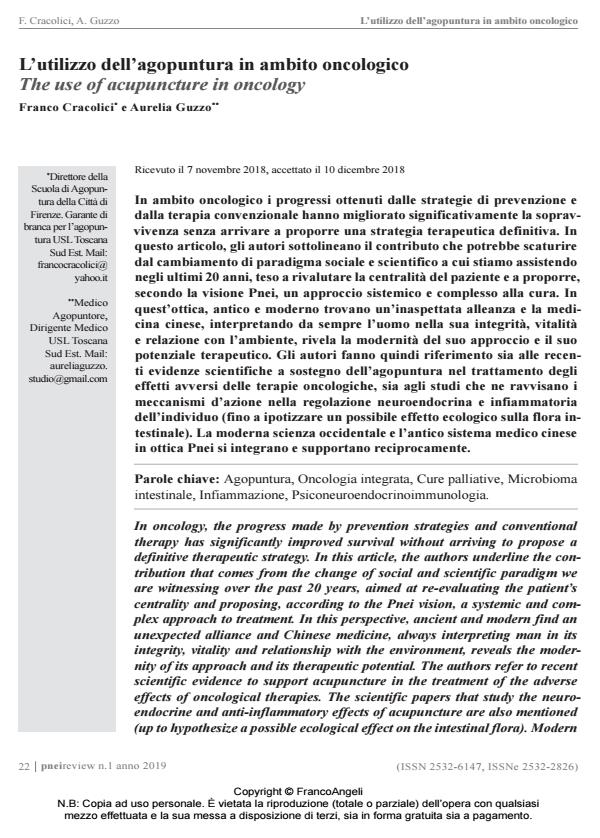L’utilizzo dell’agopuntura in ambito oncologico
Titolo Rivista PNEI REVIEW
Autori/Curatori Franco Cracolici, Aurelia Guzzo
Anno di pubblicazione 2019 Fascicolo 2019/1
Lingua Italiano Numero pagine 13 P. 22-34 Dimensione file 1091 KB
DOI 10.3280/PNEI2019-001004
Il DOI è il codice a barre della proprietà intellettuale: per saperne di più
clicca qui
Qui sotto puoi vedere in anteprima la prima pagina di questo articolo.
Se questo articolo ti interessa, lo puoi acquistare (e scaricare in formato pdf) seguendo le facili indicazioni per acquistare il download credit. Acquista Download Credits per scaricare questo Articolo in formato PDF

FrancoAngeli è membro della Publishers International Linking Association, Inc (PILA)associazione indipendente e non profit per facilitare (attraverso i servizi tecnologici implementati da CrossRef.org) l’accesso degli studiosi ai contenuti digitali nelle pubblicazioni professionali e scientifiche
In ambito oncologico i progressi ottenuti dalle strategie di prevenzione e dalla terapia convenzionale hanno migliorato significativamente la sopravvivenza senza arrivare a proporre una strategia terapeutica definitiva. In questo articolo, gli autori sottolineano il contributo che potrebbe scaturire dal cambiamento di paradigma sociale e scientifico a cui stiamo assistendo negli ultimi 20 anni, teso a rivalutare la centralità del paziente e a proporre, secondo la visione Pnei, un approccio sistemico e complesso alla cura. In quest’ottica, antico e moderno trovano un’inaspettata alleanza e la medicina cinese, interpretando da sempre l’uomo nella sua integrità, vitalità e relazione con l’ambiente, rivela la modernità del suo approccio e il suo potenziale terapeutico. Gli autori fanno quindi riferimento sia alle recenti evidenze scientifiche a sostegno dell’agopuntura nel trattamento degli effetti avversi delle terapie oncologiche, sia agli studi che ne ravvisano i meccanismi d’azione nella regolazione neuroendocrina e infiammatoria dell’individuo (fino a ipotizzare un possibile effetto ecologico sulla flora intestinale). La moderna scienza occidentale e l’antico sistema medico cinese in ottica Pnei si integrano e supportano reciprocamente.
Parole chiave:Agopuntura, Oncologia integrata, Cure palliative, Microbioma intestinale, Infiammazione, Psiconeuroendocrinoimmunologia.
Franco Cracolici, Aurelia Guzzo, L’utilizzo dell’agopuntura in ambito oncologico in "PNEI REVIEW" 1/2019, pp 22-34, DOI: 10.3280/PNEI2019-001004